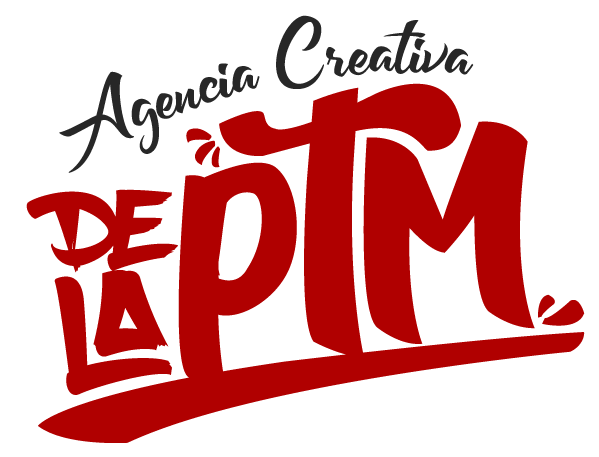A weakened immune system has a harder time protecting you from germs and viruses. Ulcers can cause dangerous internal bleeding, which can sometimes be fatal without prompt diagnosis and treatment. The pancreas helps regulate how your body uses insulin and responds to glucose. If your pancreas and liver don’t function properly due to pancreatitis or liver disease, you could experience low blood sugar, or hypoglycemia. Drinking too much alcohol over time may cause inflammation of the pancreas, resulting in pancreatitis. Pancreatitis can activate the release of pancreatic digestive enzymes and cause abdominal pain.
Indeed, all of these theories are verbal in nature, which means that they do not formalize their predictions in mathematical notation, and thus leave it up to the reader to translate them into testable hypotheses. While I will not go so far as to formalize these predictions, following the ideas of Imre Lakatos, I will attempt to identify the core assumption of these theories and derive specific and falsifiable auxiliary hypotheses from them (needless to say, these will come from my interpretation of these verbal models). The author, Anne-Pascale Le Berre, has no conflicts of interest with the reported data or their interpretation.
Casual drinkers are likely to experience positive emotions as alcohol produces dopamine and serotonin, whereas long term alcohol abuse lowers blood sugar and causes dehydration, resulting in increased negative emotions [50]. Alcohol use may provide temporary relief to people struggling with mental or emotional health. Using alcohol as a way to cope can lead to an alcohol use disorder — the clinical term for alcohol addiction. If a person increases their alcohol use over the long term and develops a tolerance, it will take greater amounts of alcohol to achieve the same calming effects.
- With the design of longitudinal studies that overcame many of the methodological limitations of early cross-sectional research, a set of core personality traits began to emerge that appeared to relate to alcoholism (see Sher et al., 1999).
- Specifically, an impairment in emotion decoding (i.e., poorer accuracy in vocal and facial emotion reading, overestimation of emotional intensity in neutral voices and faces) was identified in this clinical population (Kornreich, Saeremans, et al., 2016).
- About 15 million American adults and 400,000 adolescents suffer from alcohol use disorder, according to the National Institute on Alcohol Abuse and Alcoholism.
- Heavy drinking can fuel changes in the brain—about half of people who meet the criteria for alcoholism show problems with thinking or memory, research suggests.
Still, it is important to ensure that drinking alcohol is not your only method of reducing stress. Having multiple tools to minimize stress and anxiety is necessary for good mental health. Volpicelli says that some of the negative effects of alcohol on mental health can be reversed if you stop drinking. One thing I was surprised by was the high variability in researchers’ thoughts on the role of positive affect in the reinforcement of alcohol. In summary, I believe that it is possible to derive multiple falsifiable and rigorous hypotheses from the core assumption that alcohol use is a behavior that is reinforced through affective change.
How Much Alcohol Should You Drink?
Specifically, the model offers an explanation for why only some experiments detect anxiolytic effects of alcohol. Nevertheless, methodologically it is difficult to conduct research on this model, as studies are hard-pressed to avoid informing participants of a stressor at the study outset. One approach to examining the types of aversive stimuli most sensitive to the effects of alcohol has been systematically addressed in recent years by John Curtin, and is discussed next.
Impact of Alcohol on Mental Health
Like all addictions, alcohol use disorder is linked to a complex combination of biological, social, and psychological factors. Research highlights a genetic component to the disorder, as about half of one’s predisposition to alcoholism how to help a high-functioning alcoholic how to identify the warning signs can be attributed to genetic makeup. People may turn to alcohol as a way to cope with trauma or other, often unrecognized psychological disorders. Socially, alcoholism may be tied to family dysfunction or a culture of drinking.
Emotional Effects of Alcohol
This article appears in a special issue recognizing the enormous contributions by G. Terence Wilson to the field of behavior therapy, and to this journal as its longtime editor. I am indebted to Dr. Wilson for his mentorship during my graduate training in his Alcohol Behavior Research Laboratory (ABRL). His capacity to master, critique, and then integrate basic theories and research on human behavior with his astute clinical impressions marks him as one of the premier scientist-practitioners in our discipline, and has enabled him to make singular contributions to the field of clinical psychology. As a graduate student, I was struck by his near encyclopedic grasp of the behavioral alcohol research literature and his incisive skills regarding experimental design. I was most inspired, though, by his willingness to allow the data to inform our positions, even in cases in which new results did not support the findings of his earlier studies.
What is considered 1 drink?
If you experience anxiety, alcohol can give you a very short-lived feeling of relaxation – but this quickly disappears. If you rely on alcohol to cover your anxiety, you may soon find yourself drinking more and more to relax. This content mentions substance abuse or addiction (which may include mentions of alcohol or drug use), suicide or suicidal thoughts, self-harm, depression and anxiety. Stimulants increase dopamine levels, causing short-term increased happiness, whereas depressants reduce the function of the central nervous system leading to negative emotional states [46]. If alcohol addiction begins as a way to cope with unmanaged emotions, these emotions will return during recovery, as well as other emotional side-effects resulting from alcoholism itself [39]. Thomas, Thevos and Randall found that 23% of patients being treated for alcoholism also suffered from social anxiety, which only affects 7% of non drinkers, suggesting a correlation between the two.
Your doctor can recommend medications that can help with alcohol withdrawal symptoms and cravings during your recovery. Naltrexone is one type of medication that can help reduce alcohol cravings, making it easier for some people to stop drinking. The health effects of alcohol go beyond feeling hungover and sluggish after a night of drinking. In fact, over the years, researchers have discovered both positive alcohol and drug use and negative ways it can affect the human body depending on how much you imbibe, for how long and how often. Tolerance and dependence can both happen as symptoms of alcohol use disorder, a mental health condition previously referred to as alcoholism, that happens when your body becomes dependent on alcohol. This condition can be mild, moderate, or severe, depending on the number of symptoms you have.
These effects might not last very long, but that doesn’t make them insignificant. Impulsiveness, loss of coordination, and changes in mood can affect your judgment and behavior and contribute to more far-reaching effects, including accidents, injuries, and decisions you later regret. Alcohol use can begin to take a toll on anyone’s physical and mental well-being over time. These effects may be more serious and more noticeable if you drink regularly and tend to have more than 1 or 2 drinks when you do.
The DRD4 genotype pertains to gene × environment interactions involving alcohol-related traits (Larsen et al., 2010). For instance, Park, Sher, Todorov, and Heath (2011) found college/Greek involvement to predict increased risk of alcohol dependence, but only among students with at least one copy of the 7-repeat allele. This research raises questions regarding the mechanisms by which social factors increase risk for problematic drinking among 7-repeat carriers (Park et al., 2011; see also; Mrug & Windle, 2014).
[Of course, alternative drinking approaches such as that used in the group formation project also raise methodological complexities. Ultimately, a broad range of drinking behavior sequences may prove optimal.] Research also is needed to revisit the conditions under which alcohol may exacerbate a stress response (perhaps through impaired coping efforts). This issue has emerged in various theories (Curtin et al., 1998; Sayette, 1993a; Steele & Josephs, 1988), but there likely is benefit to systematic investigation of this phenomenon. In the years since the self-awareness, attention-allocation, and appraisal disruption models have appeared, improved theory and methods in both the behavioral and neurobiological study of emotion and cognition permit more refined investigation of the impact of alcohol on stress (see Curtin & Lang, 2007; Lang et al., 1999). Curtin and colleagues proposed that alcohol’s effects on negative affective states are not uniform.Wilson was instrumental in introducing novel conceptual and methodological approaches to reconsidering the TRT. Chief among these insights were the need for methodological rigor (with particular focus on the assessment of anxiety), the importance of context, and the value of incorporating cognitive psychological factors. Alcohol is a depressant, which can disrupt the balance of neurotransmitters (chemical messengers) in your brain and affect your feelings, thoughts and behaviour.
As this manuscript documents, Dr. Wilson’s empirical studies and his reviews of the tension reduction literature created a pivot point for this area of research, ushering in a more nuanced understanding of the impact of drinking on emotional states that continues to influence research decades after the ABRL shut its doors. For instance, although he concluded that alcohol usually will reduce tension, he also acknowledged that in some cases alcohol might increase tension—in circumstances where “restraining tendencies are initially so great that a person never comes close enough to … be aroused” (p. 303). Certainly subsequent research has continued to point to complex relations between alcohol and emotion. Yet so too has real progress been made identifying particular circumstances in which individuals will generally find relief or reward from drinking alcohol.
Results offered wide-ranging support for the premise that a moderate dose of alcohol enhances positive affect and social bonding.7 During group formation, alcohol-drinking groups experienced more social bonding than did groups drinking non-alcoholic beverages. This result would appear to be especially important; the need to belong and to bond with others is widely held to be a powerful motivating force (Baumeister & Leary, 1995). Furthermore, these robust effects appeared at both individual and group levels of analysis. Alcohol also increased time participants spent how to flush alcohol from your urine speaking to one another (and reduced moments of silence) and self-reported bonding (Sayette et al., 2012a). Consistent with the findings of Pliner and Cappell (1974), my colleagues and I have been guided by the premise that to comprehensively identify the effects of alcohol on positive affect in social drinkers, one must evaluate such participants in a social context (Sayette et al., 2012a). In addition to recruiting groups of strangers, our research methods diverge in several important ways from the bulk of research examining the hedonic effects of alcohol.


